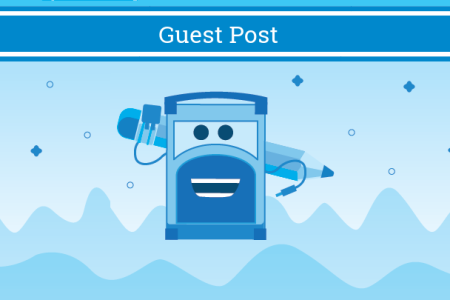Do you know what your customers are saying about your product or service?
Here’s a better question: do you know if your customers would recommend your product to their friends or family? In business, we can often get wrapped up in the number of units moved or sales made. While those two things are important for the success of your business, the real test of success is how your customers advocate for and promote your product after the sale is closed.
This guide will show you how including NPS benchmarking in your social listening and customer service strategy can help you improve the customer experience and turn your customers into brand advocates.
What is NPS?
Before we dive into the technical side of NPS, let’s define it.
NPS is a customer satisfaction benchmark. The purpose of NPS is to gauge customer loyalty to your brand and more importantly, how likely they are to recommend your product to their peers.
What makes NPS such a popular benchmark for measuring customer loyalty is that an NPS survey doesn’t need to be any more than a single question. Your NPS survey question should be concise and follow a format similar to this:
“How likely are you to recommend [insert product] to a peer?”
Believe it or not, distributing your NPS question is just as easy as creating it. You can fold the question into a larger existing customer satisfaction survey or use an NPS software or survey software to automate a follow-up questionnaire about a month post-sale.
How do you calculate NPS?
Once you’ve collected all the data from your NPS survey, it’s time to calculate your NPS.
Your current users provide an answer of how likely they would be to recommend your product to their peers on a scale from 0-to-10. After you’ve collected your survey answers, the first step is to break all the respondents into three categories: detractors, passives, and promoters.
Group 1: Detractors (Score: 0-6)
Anyone who answers your NPS survey between a 0-6 is considered detractors. While a score of a 6 might not seem terrible, the point of NPS is promotion. Someone who scores your product a 6 might enjoy the product but not enough to tell others to purchase it.
Group 2: Passives (Score: 7-8)
Anyone who answers your NPS survey between a 7-8 is considered passives. Again, while these scores are relatively high, they aren’t high enough to be counted as active promoters. Anyone who falls into this range won’t be counted in your overall score.
Group 3: Promoters (Score: 9-10)
Anyone who answers your NPS survey between a 9-10 is considered promoters. These are the “Apple fanboys” of your product. They are loyal to your brand to the point that they tell others about your product and encourage them to purchase it. They are your brand ambassadors.
Now that you have everyone sorted, it’s time to run the numbers.
It’s important to remember to use the percentage of people who fall into each category, not just the raw numbers. Your final outcome should be a percentage.
What is a good NPS score
Now you’ve got your NPS percentage, but what does it mean?
While it’s not always easy to determine a strong NPS, there are some global standards. Once you’ve calculated your NPS, find yourself on the chart below to get an idea of where your company is starting out. Once you’ve done that, you can create a plan for how to move forward.
Why does NPS matter?
Measuring your NPS score is important for a couple of reasons. For starters, it gives you a clear look into how your customers feel about your product. It also allows you to see which of your customers aren’t as happy and offers your team a chance to improve their experience.
Other benefits of monitoring your NPS include:
- Shows your customers you’re listening
- Insight into customer pain points
- Improves customer loyalty
- Supports social listening and customer service efforts
- Improves the quality of word of mouth marketing
NPS should fold into your larger customer retention strategy and act as a supplement to the work your customer success team is doing. It’s a gut-check on how your company is doing, how you can improve, and most importantly, what you can do to improve the customer experience.
Activate your brand advocate with NPS
Now that you understand how NPS works, it’s time to put it into action. Remember, your NPS score is flexible and can improve and dip as time goes on. Don’t stop improving once you hit an excellent NPS score, and always push the envelope.
![What Is an NPS Score? [+ Why Your Company Should Track It] 3 What Is an NPS Score? [+ Why Your Company Should Track It] 1](https://referralrock.com/blog/wp-content/uploads/2019/07/Screen-Shot-2019-05-29-at-5.30.17-PM-e1563368976150.png)

![What Is an NPS Score? [+ Why Your Company Should Track It] 1 how to measure NPS score](https://referralrock.com/blog/wp-content/uploads/2019/07/how-to-measure-NPS-score--1024x682.png)
![What Is an NPS Score? [+ Why Your Company Should Track It] 2 how to measure NPS score 2](https://referralrock.com/blog/wp-content/uploads/2019/07/how-to-measure-NPS-score-2-1024x539.png)



